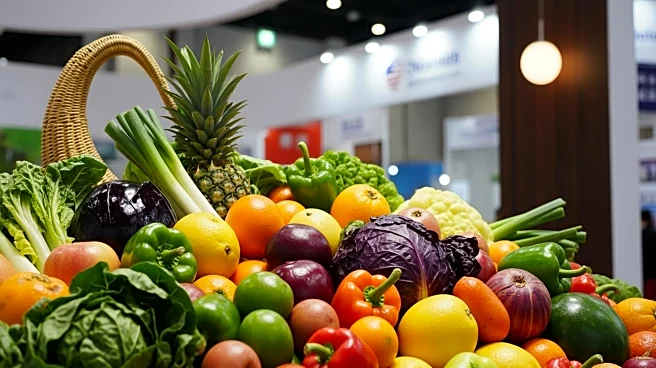What's Happening?
The agriculture sector in Idaho is experiencing a tumultuous year due to a combination of tariffs, trade negotiations, and the ongoing government shutdown. According to Brett Wilder, an economist at the University
of Idaho, these factors are causing significant delays and disruptions for producers. The crop sector is facing downward pressure on prices due to overproduction, while livestock producers benefit from cheaper feed. However, input costs remain high, with expenses for electricity, fertilizer, pesticides, and fuel increasing by nearly 50% since 2020. The uncertainty in international trade, particularly concerning pulse crops like chickpeas and dry beans, adds to the challenges. The government shutdown further exacerbates the situation, affecting USDA operations and impacting demand as government workers face financial strain.
Why It's Important?
The current challenges in agriculture have broad implications for the U.S. economy and food supply chain. High input costs and trade volatility threaten the financial stability of producers, potentially leading to increased bankruptcy and delinquency rates. The government shutdown's impact on USDA operations could disrupt food safety inspections and international trade, affecting both domestic and global markets. If these issues persist, they could lead to long-term difficulties in accessing food, impacting communities and everyday life. The agriculture sector's struggles highlight the need for stable trade agreements and government operations to ensure economic resilience and food security.
What's Next?
The resolution of the government shutdown is crucial for stabilizing the agriculture sector. Producers are hopeful for the end of the shutdown to resume normal operations and alleviate financial pressures. Trade negotiations remain a critical area, with the potential for new agreements to improve market conditions for pulse crops and other agricultural products. Stakeholders, including government officials and industry leaders, must address these challenges to prevent further disruptions and support the sector's recovery.
Beyond the Headlines
The agriculture sector's current predicament underscores the interconnectedness of global trade, government policy, and economic stability. The volatility in trade agreements and government operations highlights the need for strategic planning and risk management in agriculture. Long-term solutions may involve diversifying markets, investing in sustainable practices, and enhancing supply chain resilience to mitigate future disruptions.













